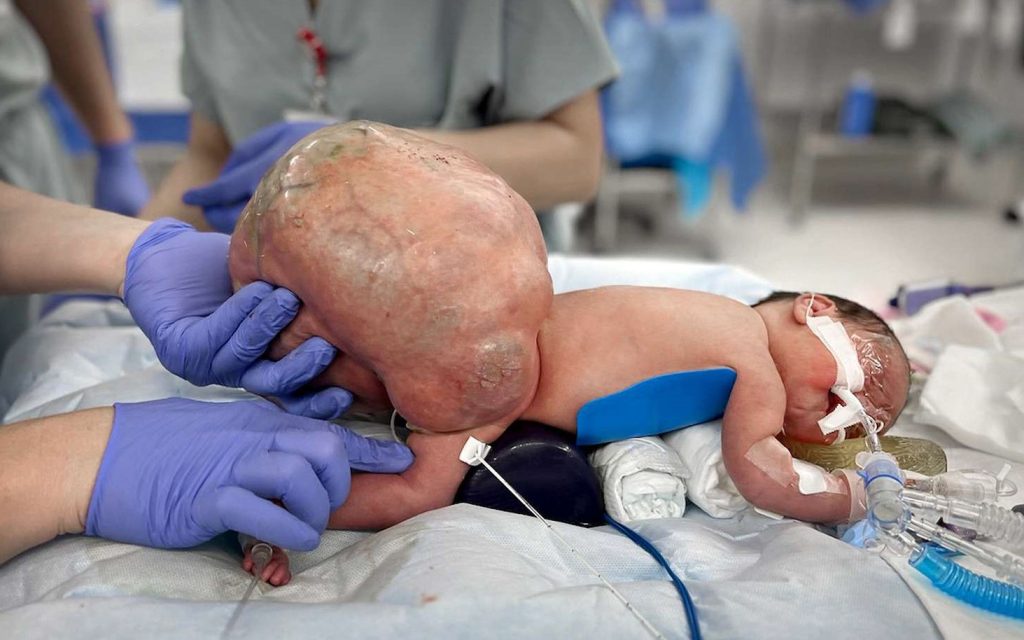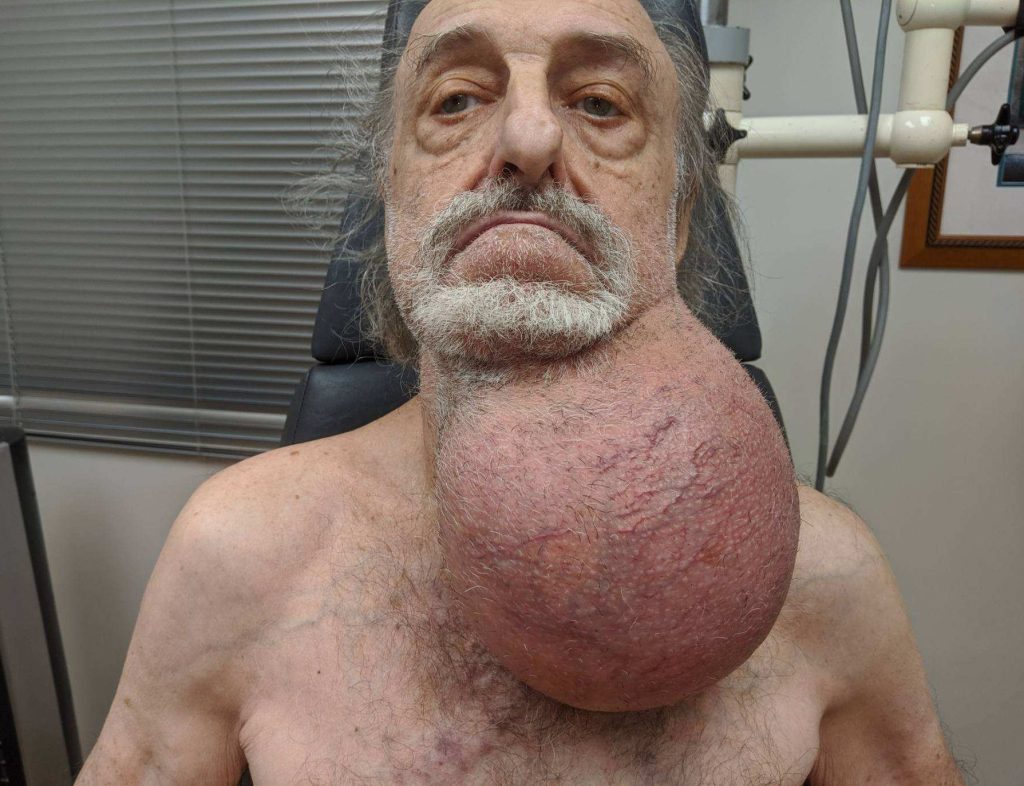Tumors are caused by uncontrolled cell growth, which can happen due to several factors. The main causes include:
1. Genetic Mutations
- Changes (mutations) in DNA can cause cells to grow and divide uncontrollably.
- These mutations can be inherited or acquired due to environmental factors.
 2. Environmental and Lifestyle Factors
2. Environmental and Lifestyle Factors
- Carcinogens: Exposure to harmful substances like tobacco smoke, radiation, asbestos, and certain chemicals.
- Diet & Obesity: Poor diet and excessive body weight can increase the risk of tumors.
- Alcohol & Drug Use: Excessive alcohol consumption and drug use can contribute to cell damage.
3. Infections & Viruses
- Certain viruses (e.g., HPV, Hepatitis B & C, Epstein-Barr virus) can trigger cancerous cell growth.
- Some bacterial infections, like Helicobacter pylori, can increase the risk of stomach cancer.
4. Immune System Problems
- A weakened immune system (due to conditions like HIV/AIDS or immunosuppressive drugs) can make it harder for the body to detect and destroy abnormal cells.

5. Hormonal Imbalances
- Some hormones can promote cell growth, increasing the likelihood of tumor development (e.g., estrogen in breast cancer).
6. Chronic Inflammation & Injury
- Long-term inflammation (due to diseases like Crohn’s disease or chronic infections) can lead to DNA damage and tumor formation.
Types of Tumors
- Benign Tumors: Non-cancerous and don’t spread.
- Malignant Tumors: Cancerous and can invade other tissues.
1. Benign Tumors (Non-Cancerous, Usually Not Life-Threatening)
- Lipomas – Fat cell tumors, often found under the skin.
- Adenomas – Form in glandular tissue (e.g., colon polyps).
- Fibroids – Found in the uterus; common in women.
- Meningiomas – Grow in the membranes around the brain/spinal cord.
2. Malignant Tumors (Cancerous, Can Spread)
- Carcinomas – Start in skin or organ-lining cells (e.g., lung, breast, colon cancer).
- Sarcomas – Develop in bones, muscles, or connective tissues.
- Leukemias – Cancers of the blood and bone marrow.
- Lymphomas – Affect the lymphatic system (e.g., Hodgkin’s and Non-Hodgkin’s lymphoma).
3. Brain Tumors
- Glioblastoma – Highly aggressive brain cancer.
- Astrocytoma – Develops from star-shaped glial cells.

Treatment for tumors, whether benign or malignant, often involves various methods depending on the type, location, and stage of the tumor. Protection during treatment is essential to minimize side effects, preserve healthy tissues, and maximize the treatment’s effectiveness. Here are the common approaches to tumor treatment and how they are protected or managed:1. Surgery
Purpose: To remove the tumor from the body, particularly if it’s localized and can be easily accessed.
Protection:
Surgeons use precise techniques (e.g., robotic surgery, minimally invasive procedures) to limit damage to surrounding healthy tissues.
In some cases, surgery may be followed by additional treatments (radiation, chemotherapy) to ensure all cancerous cells are removed.
2. Radiation Therapy
Purpose: To kill cancer cells or shrink tumors using high-energy radiation (X-rays, gamma rays).
Protection:
Precision targeting: Advances like stereotactic radiosurgery and proton therapy allow for high doses of radiation to be directed specifically at the tumor, protecting surrounding tissues.
Radiation shielding: Patients may wear lead shields or protective covers to minimize radiation exposure to healthy areas.
Fractionated radiation: Dividing the total radiation dose into smaller doses spread over days/weeks to allow healthy cells time to recover.
3. Chemotherapy
Purpose: To kill cancer cells or stop their growth using powerful drugs, often targeting fast-growing cells.
Protection:
Targeted therapy: Uses drugs designed to attack specific cancer cells without harming normal cells. This minimizes side effects like hair loss and nausea.
Chemoprotective agents: In some cases, drugs may be used to protect healthy tissues from damage (e.g., to prevent damage to the heart, kidneys, or nerve cells).
Dose adjustment: Chemotherapy doses can be adjusted to balance effectiveness and minimize harmful side effects, often in combination with regular monitoring of blood counts.

4. Immunotherapy
Purpose: To stimulate the body’s immune system to recognize and fight cancer cells.
Protection:
Checkpoint inhibitors: These help the immune system to recognize cancer cells that are hiding, and can be more targeted than traditional therapies.
Side effect management: Immunotherapy can cause autoimmune reactions, so medications like corticosteroids may be used to manage inflammation or immune responses.
5. Hormone Therapy
Purpose: To block hormones that fuel certain types of cancer (e.g., breast and prostate cancers).
Protection:
Selective hormone blockers: Drugs are designed to block the specific hormone pathways that stimulate tumor growth while minimizing impact on other hormone systems.
Regular monitoring for potential side effects like bone thinning or hot flashes, and using medications to manage these.
6. Targeted Therapy
Purpose: To block the growth of cancer cells by targeting specific molecules involved in the growth and spread of tumors (e.g., specific proteins or genes).
Protection:
Personalized treatment: Genetic testing of the tumor allows for tailoring treatments to specific mutations, minimizing harm to healthy cells.
Minimizing side effects: Targeted therapies often cause fewer side effects compared to chemotherapy because they are designed to act specifically on cancer cells.
7. Stem Cell Transplantation
Purpose: To replace damaged bone marrow with healthy stem cells, often after chemotherapy or radiation therapy.
Protection:
Stem cell harvesting: Healthy stem cells are collected before treatment to ensure the patient’s immune system can regenerate.
Supportive care: Measures like antibiotics, blood transfusions, and antiviral treatments are used to protect patients during the recovery period.
8. Supportive Care
Throughout the treatment process, supportive therapies may be used to protect the body from the negative side effects of treatments:Pain management (e.g., pain relievers, nerve blocks)
Nutritional support to maintain health during treatment
Psychological support (e.g., therapy, counseling) to help cope with emotional challenges
https://youtu.be/4J6v9m_S1Gs?si=LUe5TXEQrtlpB6Uq


